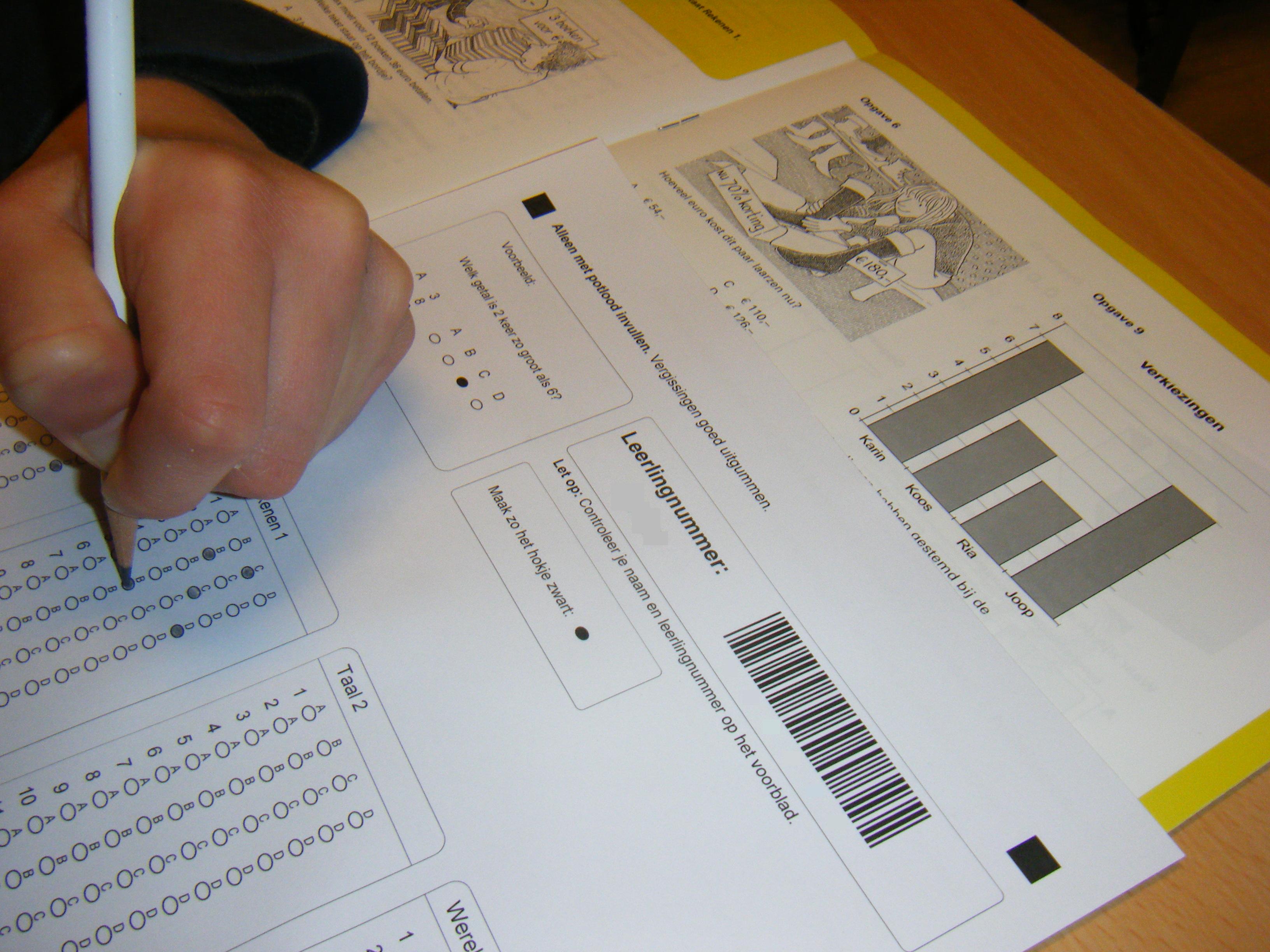E-411 PRMA
Lecture 7 - Test Development
Review
Classical Test Theory & Reliability
Test-Retest
Parallel Form
Internal Consistency
Quantifying uncertainty (i.e. standard error of measurement)
Review
Validity
Content
Criterion-Related
Construct
Tests, Test, Tests

Test Development
- Conceptualization
- Construction
- Piloting
- Item Analysis
- Revision
Test Conceptualization
Identify a need for this test
Identify a purpose for this test
No test exists
People aren't static, so tests need to be revised
What else should we be thinking about when we're conceptualizing a test?
Norm or Criterion-Referenced


Does it matter?
- Norm-Referenced
- Want high scores on the test to get the item correct and low scores on the test to get the item incorrect
- Want to spread out testtakers
- Criterion-Referenced
- Want high scores on the test to get the item correct and low scores on the test to get the item incorrect
- However, each item needs to measure whether a criterion is met
Test Construction
Now that we know why, we have to know how
We need a set of rules for assigning numbers in measurement - scaling
In psychology, scales are instruments used to measure traits, states, or abilities
Scales

Types of Scales
Nominal, ordinal, interval, or ratio
Examples?
Rating Scales
Testtaker indicates their response to an item by selecting among strengths
Examples: Stealing
Likert-Type are common rating scales
Scores from test could be summed (summative) directly; factor analysis or item response theory could be used
Scale Issues
“Downloading movies is the same as stealing”
| Strongly Agree | Agree | Neither Agree/Nor Disagree | Disagree | Strongly Disagree |
Are the distances the same betwen the choices?
What might affect are choices?
More Scales
Paired comparsions - choose between two options scored based on some criteria
Comparative scaling - items are arranged based on some criteria and categorical scaling - items into two or more categories
Guttman scale - items written in a sequential manner such that someone higher on the trait will agree with the strongest statements through the mildest statments
Let's write some items that use these scales
Let's brain storm 10 nouns
Interval Scales
Could use Thurstone's equal-appearing scale (p 250 - 251)
I am skeptical ... what do you think?
Let's write a test!

Writing Items
- What content should the items cover?
- What should the format of the items be?
- How many items should be written and for each content area?
- Book recommends writing 2x the number of items for the item bank/pool . . . seems a bit excessive
Types of items
Selected-response vs constructed response


Selected-Response
Types
Multiple-choice
Binary-choice
Matching
Each item will have a stem, correct chioce, and distractors
- A good multiple-choice item in achievement test
Only one correct choice
Grammatically parallel alternatives
Alternatives of similar length
Alternatives that fit grammatically with the stem
Include as much information in the stem as possible to avoid repetiiton
Avoids ridiculous distractors
Is not excessively long
Final thoughts on selected-response
There are more than just true/false for binary-choice items
Matching bank should have more answers choices than items and/or be used more than once
Guessing is a problem in an achievement setting
Always forcing a choice in a non-achievement setting
Constructed response
Completion items are fill-in-the blank responses
Short-answer items require a response of a few sentences
Essay items are long short-answer items demonstrating deeper, more thorough knowledge
More deeply probe a specific portion of a construct, require more time
Subjectivity in scoring essays
What reliability statistic would we report here?
Scoring the items
Cumulative model - sum up the items on the test
Class scoring - based on pattern of responses placed with similar testtakers
Ipsative scoring - score on a scale within a test compared to score on another scale on same test
Edwards Personal Preference Schedule - measures relative strength of different psychological needs
Could look at both the cumlative scores on seperate scales and the pattern of these scores, profile analysis
Piloting the test

Item analysis
Many different ways to analyze items
Can focus on
Difficulty of item
Reliability of item
Validity of item
Discrimination of item
Item Difficulty
Proportion of testtakers that get the item correct
Higher the item difficulty, the easier the item
item-endorsement index
Can calculate average item difficulty for the test
Optimal value = $\frac{\text{Pr(Guess)} + 1}{2}$
Item Difficulty - Example
Administer an item to 10 students and 4 students get the item correct
What is the item's difficulty?
If the item was a multiple choice with 5 distractors, what is the optimal item difficulty?
Item Reliability
Internal consistency of the test
Software often calculates changes in a reliability index (e.g. coefficient alpha) when item is deleted
Examine factor loadings
Calculate item-reliability index = $s_i * r_{i,\text{ttscore}}$
- $s_i$, the standard deviation of item i
- $r_{i,\text{ttscore}}$, correlation between item i and total test score
Item Reliability Index - Example
| Item 1 |
| 1 |
| 0 |
| 0 |
| 1 |
| 1 |
Assume correlation between item 1 and total test score is 0.7
Item Validity
Item-validity index = $s_i * r_{i,\text{crit}}$
- $s_i$, the standard deviation of item i
- $r_{i,\text{crit}}$, correlation between item i and criterion measure
Item Discrimination
Point-biserial correlations - Are testtakers with higher abilities more likely to get the item correct?
IRT's discrimination parameter
Item discrimination index
Discretize total test scores into upper and lower 27%
Calculate number of "high" scores that got item correct and number of "low" scores that got item correct
Calculate difference
Examine distractor functioning
Example in R
Issues in Test Development
Guessing
Bias in favor of one group - differential item functioning
Test length and duration of testing session
Alternatives to item analysis
Think Alouds
Expert Panels
Interviews
Qualitative Methods
Test Revision
On what basis should we revise our items?
Too easy or too hard items?
Items with similar difficulty that are measuring the same concept?
Items with negative point-biserial correlations?
Items that on a second/third read through seem unrelated to the construct?
Items with low factor loadings?
Based on IRT?
Standardization
We settle on our revisions
Administer revised version to new sample
This becomes our comparsion group, our standardization sample
Revising old tests
Tests need to be revised when the domain has significantly changed
Content of the items is not understood or changed
Test norms are no longer adequate
Theory underlying the domain has changed
Reliability and validity of the instrument can be improved
Cross- and co-validation
Cross-validation - revalidation of a test on a seperate, independent sample of testtakers
Item validities should shrink during this process (validity shrinkage)
Co-validation - test validation conducted on two or more tests with the same sample of testtakers
Creating norms, co-norming
Cheaper, reduces sampling error by norming on the same sample